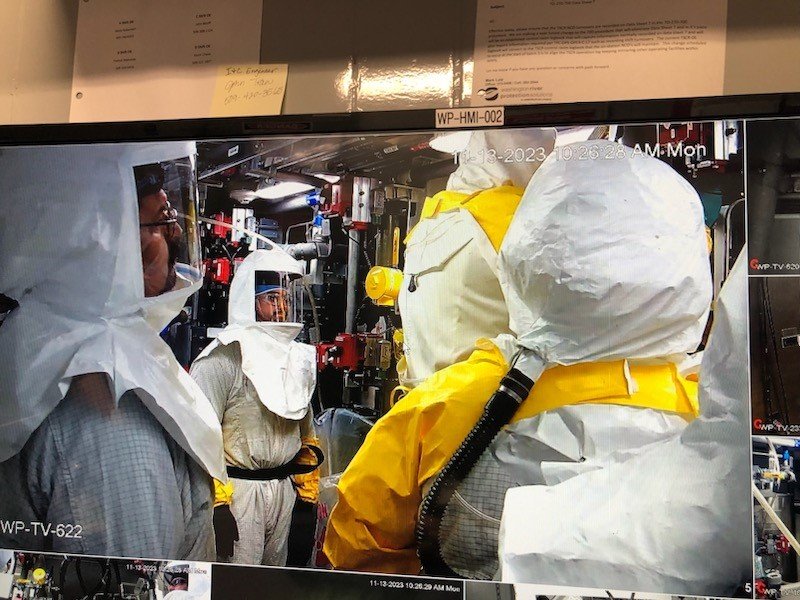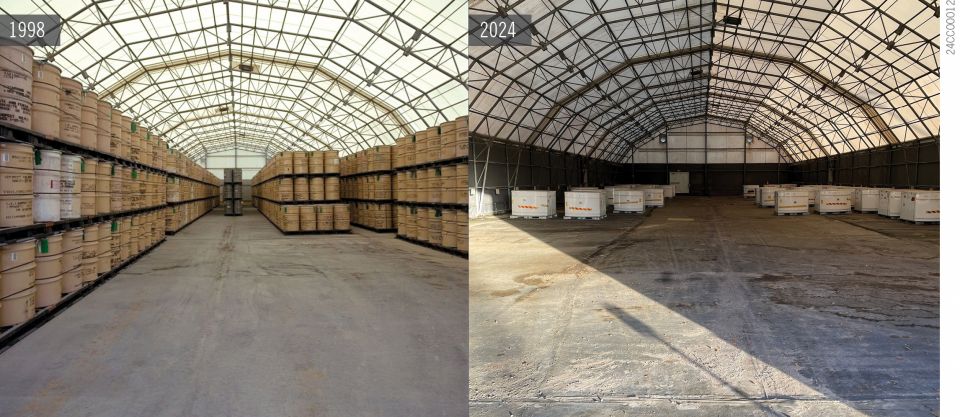A monitor in the control room of the Hanford Site’s TSCR system shows workers performing maintenance inside the TSCR facility. (Photo: DOE)
The Department of Energy Office of Environmental Management’s Office of River Protection and contractor Washington River Protection Solutions have completed the first waste processing campaign through the Tank-Side Cesium Removal (TSCR) system at the Hanford Site.
TSCR is a demonstration project that removes radioactive cesium and solids from tank waste and delivers low-activity waste to a nearby underground storage tank.
Goal: The treatment system hit a milestone in December by processing more than 800,000 gallons of radioactive liquid waste since the campaign began in February 2022. The TSCR team reached that goal after a record-setting maintenance outage of only three weeks. In addition, TSCR removed over 99.99 percent of radioactive cesium from the processed liquid waste.
The waste is staged until it can be fed to Hanford’s Waste Treatment and Immobilization Plant for vitrification—immobilization in glass. TSCR is a key component and the first step in Hanford’s Direct-Feed Low-Activity Waste Program to treat tank waste, according to the DOE.
About Hanford: The Hanford Site in Washington state is home to approximately 56 million gallons of radioactive tank waste stored in 177 underground tanks. It represents one of the DOE’s largest environmental risks and most complex challenges. The tank waste is the result of nearly five decades of plutonium production that supported national security missions and helped end World War II.








